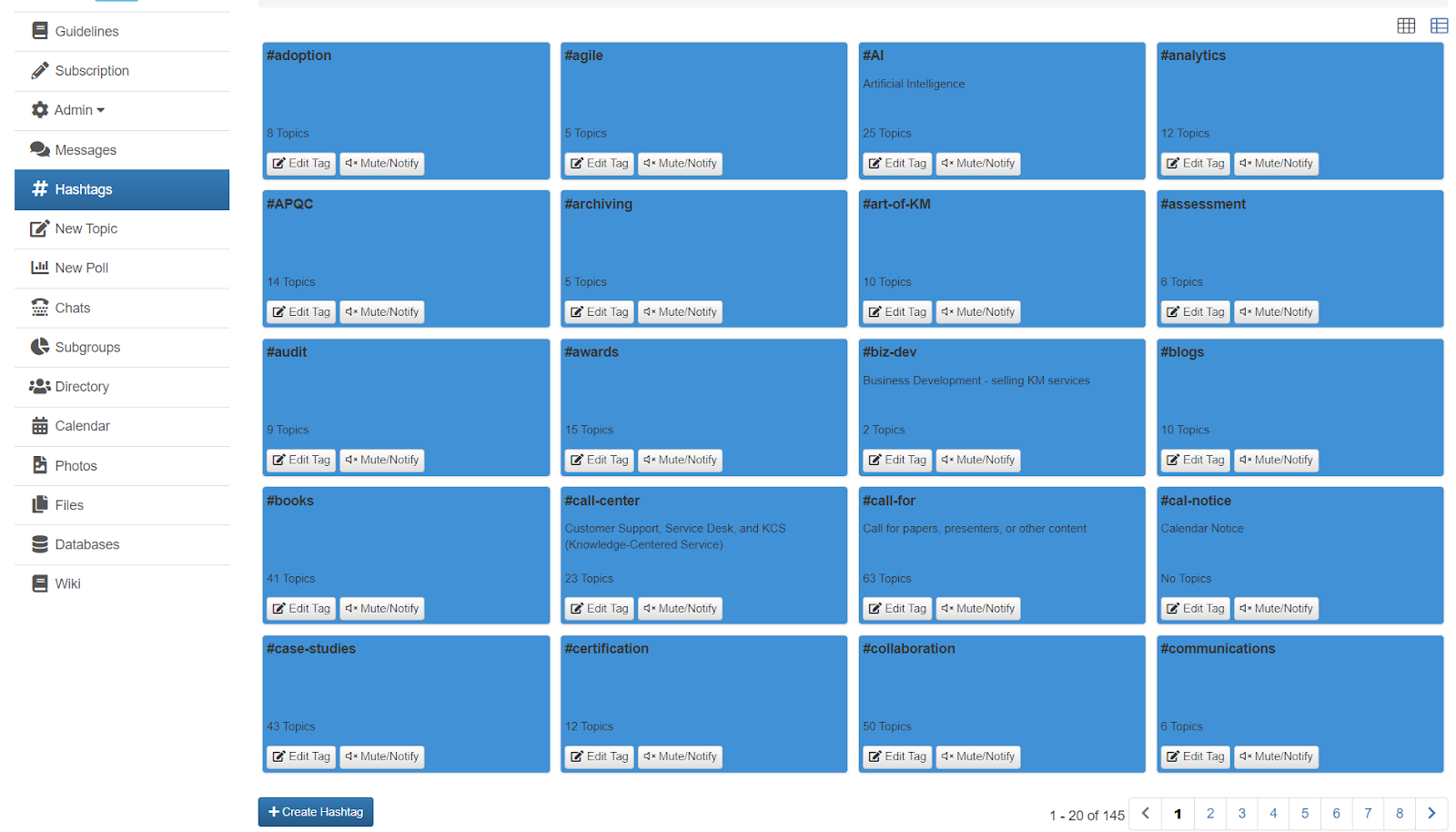The Five Cs of KM: Connect Part 3—Content to Content

Stan Garfield
Connecting content to content means ensuring that when users view one knowledge asset, they are able to see all related items. This type of connection is intended to expand the horizons of users so that they see beyond a single document or other resource to take in other content that may also be valuable. In this way, their knowledge sources are extended and diversified.
The additional assets should be displayed to users so that they see the connections. One goal is to offer an integrated view of all knowledge assets for a specific topic. A second goal is to prevent users from downloading a single document and being unaware of other potentially useful ones. And a third goal is to help users when they look up a single term in an index by showing them related terms.
Connecting content to content can be accomplished by creating a taxonomy, a thesaurus, and links between content.
Taxonomy
A taxonomy is a particular classification arranged in a hierarchical structure that can be used to organize information so that it can be readily found through navigation, search, and links between related content. A taxonomy formalizes the hierarchical relationships among concepts and specifies the term to be used to refer to each. It prescribes structure and terminology. Examples of taxonomies include the Dewey Decimal System for libraries and the organization of living things (Kingdom, Phylum, Class, Order, Family, Genus, Species) for biology.
Once you have a taxonomy you can create a controlled vocabulary with a picklist containing the official terms in the defined hierarchy. These terms can then be applied as metadata to any of the content captured in knowledge repositories. Creating and maintaining a standard taxonomy and providing an easy way of tagging content make it easy for users to find just the relevant content they need without seeing too much or too little.
I went through a tagging exercise in a community that I lead, the SIKM Leaders Community. I went back to the old threaded discussions and added hashtags to each one using a controlled set of topics. This allows me to easily respond to people asking new questions by referring back to previous threads on the same topic. For example, if a member asks about maturity models, I can provide a single link to the #maturity hashtag. The community has unique hashtags for each important topic and all of the content in the discussions is tagged. This is a powerful capability to offer to the members.

SIKM Leaders Community Hashtags
Thesaurus
A thesaurus provides an initial entry point, in the user’s terms, to the structured language of the taxonomy used to index content. A list of synonyms can be maintained in a thesaurus, which should be helpful if someone is looking for content using one term, but it was tagged using a related but different term.
A good way to augment an index used for navigation is to maintain a thesaurus as part of that index. To do so, list all the words that a user might think of for a given topic, i.e., that are synonyms, and add them to the index with brief text or a link redirecting to the main topic. Maintaining synonyms is an important way of helping people to find things regardless of how they view a topic. They will have the option of finding content in the way they view it, not just the way the system defines it.
Whenever confusion over terminology is possible, an effective method for resolving it is disambiguation. In Wikipedia, a disambiguation page lists several different variations of a term, adds a brief description of each one to help differentiate them, and links to the appropriate page for each one. If a term has multiple meanings, use disambiguation to help guide users to the right content.
For example, the term AI has two different meanings in the context of knowledge management. If a user enters “AI” in a search box, or clicks on AI in tag cloud, that should lead to a screen that lists both. It might display “AI: Artificial Intelligence or Appreciative Inquiry’ with each term linked to the appropriate content. Or it might ask the question “Did you mean Artificial Intelligence or Appreciative Inquiry?” and then redirect accordingly.
Links
The most explicit way to connect content to other relevant content involves embedding direct links, either hotlinks in the main body of the text or a section at the end labeled “See also.” Anticipating what else users may be looking for and guiding them to it can make things much easier for them.
Whenever I write an article or blog post, the last section is “Additional Resources” with links to related articles. This provides even greater depth, variety, and diversity of thinking than I can offer just from my own writing. In a sense, the links extend the article by linking to other content. Readers don’t have to go search and discover other content on their own because direct links drop them off where they need to be.
The same process can be used with discussions. By clicking on the tags added to any thread, community members can read all of the previous discussions on that same topic. As a community manager, I often post links to previous discussions in new ones. And linking from a document to a discussion, or from a discussion to a document, can enhance the value of both the document and the discussion.
In Part 4 of this series, I will discuss connecting with external users.

Stan Garfield
To learn more, please join us for “The Five Cs of Knowledge Management Part 3: Connect”, the third in a new series presented by Stan Garfield on Wednesday, April 19, 2023 at 11 a.m. Pacific, 2 p.m. Eastern. (Can’t make it? Register anyway and we’ll send you a link to the recording and slides afterwards). Register now or call 604-278-6717
Never miss another post. Subscribe today!
Similar Posts
Lucidea’s Lens: Knowledge Management Thought Leaders Part 106 – Hubert Saint-Onge
As the creator of the Knowledge Assets Framework Hubert has shaped how businesses integrate strategy leadership and knowledge sharing to drive performance.
Lucidea’s Lens: Knowledge Management Thought Leaders
Part 105 – James Robertson
James Robertson is a pioneer in intranet strategy and digital workplace design helping organizations create seamless employee experiences. As the Founder of Step Two and a respected industry voice he has shaped best practices in content management portals and digital experience design.
Lucidea’s Lens: Knowledge Management Thought Leaders
Part 104 – Vincent Ribière
Vincent Ribière advances knowledge and innovation management through AI creativity and KM. Explore his work in academia research and industry leadership.
Lucidea’s Lens: Knowledge Management Thought Leaders Part 103 – Tony Rhem
In this edition of Lucidea’s Lens: Knowledge Management Thought Leaders we highlight Dr. Tony Rhem a leading expert in AI big data information architecture and innovation. As CEO of AJ Rhem & Associates Tony has shaped the fields of knowledge management governance and emerging technologies.





Leave a Comment
Comments are reviewed and must adhere to our comments policy.
0 Comments